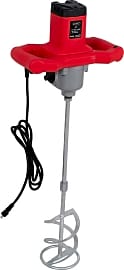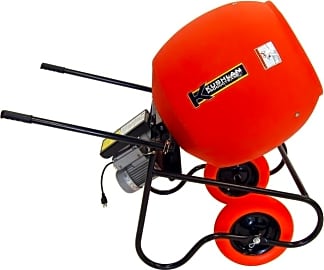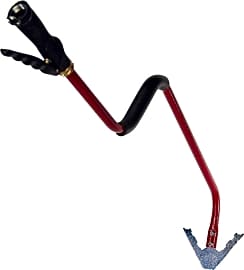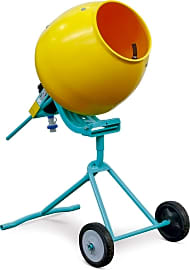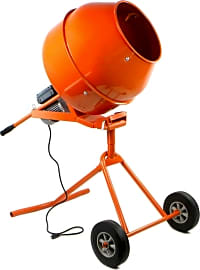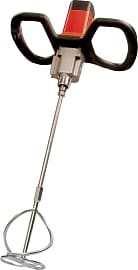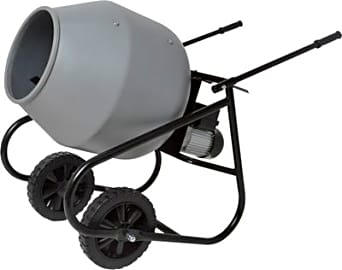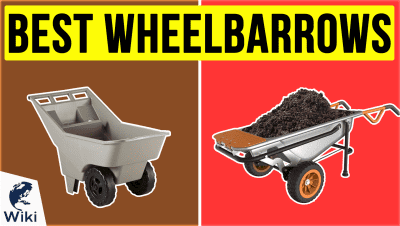The 10 Best Concrete Mixers

This wiki has been updated 32 times since it was first published in February of 2017. Without the right equipment, a bag of cement is just one massive paperweight. And anyone who has ever tried to mix it without the right tool can tell you what a hassle that is. These mixers help you quickly and easily create one of the most important building materials known to man. The larger models can even keep it ready for hours on end, so you don't need to rush through your work. When users buy our independently chosen editorial choices, we may earn commissions to help fund the Wiki.
Editor's Notes
February 02, 2021:
The main change during this update was to remove the Goplus SU-1232 due to availability issues. We replaced it with the Stark Portable 67001-3, which has a bigger opening than the former and more capacity. After that, we dived into the research on the models available on the market and compared them with our current recommendations. This reaffirmed our previous choices as being the best options, and showed that we still had the right mix of drum and handheld models.
August 13, 2019:
Mixing cement can be made a whole lot easier with one of the handy units on this list. The key is making sure you buy the right tool for your needs, though. For example, if you are working on a small project and don't need to mix large batches of concrete, then models like the F2C Pro ST6-1600, Lewis Lifetime Tools Lightning Pro iCMLP-50, QEP Brutus 21665Q, and DeWalt DW130V are smart options. Choosing a larger option for a small job may just result in wasted concrete, since you may have to mix more than you need for your job to work a larger mixer effectively. If you already have a power drill and only need to prepare a couple of buckets of cement for a one-off project, the ABN Power Mixer is a smart choice, as it attaches to a tool you already own. Of the previously mentioned models, the Lewis Lifetime Tools Lightning Pro iCMLP-50 requires the most physical effort, since it is a fully manual model.
Those who are planning on a larger job, like laying a sidewalk or foundation for a big structure, should look to mixers that can operate without independently. Not only will they allow you to prepare larger amounts of this building material in each batch, but they can also keep it moist and ready to use for long periods of time. Of the models on our list, the Kushlan Products 600DD has the largest capacity, with a six cubic-foot drum, followed by the four cubic-foot YardMax YM0046. If you plan on dumping your concrete into a wheelbarrow to transfer it from your mixing area to your work area, the Imer Minuteman II is probably the smartest choice, since it has a high drum placement.
Special Honors
MarshallTown 27256 This industrial-grade model runs on a reliable Honda GX240 engine and has a six cubic-foot mixing capacity. The entire unit sits on a reinforced square tubular frame to ensure it is stable, and though large and heavy, it features a high-speed towing kit and connects to two-inch ball hitches, so you shouldn't have any trouble getting it from jobsite to jobsite. marshalltown.com
Crown C12 Featuring laser-mixing blades for fast and thorough mixing, an abrasion-resistant steel drum, and cast iron pinions and gear rings, this heavy-duty option offers longevity and efficiency. It is equipped with a retractable and removable tow bar for safe operation, and it has a swing-away hood in case your ever need to perform some maintenance. crownequip.com
A Brief History Of Concrete
When you think about concrete, you probably think of it as a relatively modern invention.
When you think about concrete, you probably think of it as a relatively modern invention. Then, you likely stop to ask yourself why you're thinking about concrete.
However, the stuff has been around, in some form or another, for far longer than you probably realize. The first use of a concrete-like substance dates all the way back to 6500 B.C.E., when Bedouin traders used it to make floors, houses, and underground cisterns.
By the time the Egyptian empire was in full force about 3,500 years later, the process was sophisticated enough to allow them to make a few pyramids (you might have heard of them). They used mud mixed with straw, which was then dried in the sun and combined with lime and gypsum mortars. The Chinese used similar mixtures around the same time to make their Great Wall.
The Romans, however, really took concrete production to the next level. They were using it in most of their construction efforts by 200 B.C.E., and their formula included volcanic ash, lime, and seawater. The ash was especially important, as it enabled the mixture to set underwater. This allowed the Romans to create one of their most important projects: the aqueducts.
Once the Roman Empire fell, however, concrete production began to lag — largely because the formula was lost for nearly a thousand years. In 1414 C.E., however, manuscripts were discovered detailing the process, and people began to experiment with concrete again.
In 1793, a British engineer named John Smeaton began adding hydraulic lime to concrete, which he then used to build several lighthouses on the coast. One of his countrymen, Joseph Aspdin, created Portland cement in 1824, and his son William perfected the design a few years later.
The next big breakthrough, reinforced concrete, would come along at the midpoint of the 19th century. This process involved embedding steel bars inside the cement before it sets, thereby improving the tensile strength of the mixture.
Reinforced concrete would be used to build bridges by the end of the century, and in the 1930s, both the Hoover and Grand Coulee Dams used it in some of the biggest and most ambitious applications of concrete the world had ever seen at that time.
The success of the dam projects spurred interest in using reinforced concrete for other formidable projects, and many high-rise building were created using it. In 2011, the Burj Khalifa in Dubai set the record, becoming the tallest structure in the world at 2,722 feet.
Concrete is used in a wide variety of applications today, and has surpassed steel in terms of material used. It's everywhere you look, and cities have even been called "concrete jungles" as a result. There are few materials that are as durable and cost-effective, so chances are it's here to stay for the foreseeable future.
How To Use A Concrete Mixer
If you've never used one before, trying to figure out a concrete mixer can be a little intimidating — and the only thing worse is admitting that you don't know what you're doing.
While we can give you a general idea of what to do, you should know that your best bet will always be to read the instructions that came with the machine and listen to the manufacturer.
Also, if anyone comes by and says that no matter how much you water the concrete it won't grow, you have our permission to spray them with the hose.
First, start by adding whatever half of whatever ballast or aggregate you're using — typically sand and gravel — into the drum and adding a little bit of water. It usually takes about a gallon of water, but that's dependent on the specific mix, so again, swallow your pride and read those instructions.
Then, empty the entire bag of cement into the drum, plus the rest of the ballast. Let the machine mix it for a few minutes, and then add a bit more water, until your mixture is smooth and plastic-looking. Now you're ready to pour!
Once you're done, expect it to take about 28 days for the concrete to cure. During the first week, you should hose down the surface every day to ensure that it sets correctly and reaches its maximum strength potential.
Also, if anyone comes by and says that no matter how much you water the concrete it won't grow, you have our permission to spray them with the hose.
Tips For Cleaning Your Mixer
When you're finally done with the backbreaking labor that's involved in pouring cement, the last thing you want to do is clean your mixer. However, it's imperative that you do so after every use, or else the drum can become coated with dried concrete and ballast, making your job all the more difficult.
If you don't wait too long, this could be all you need to do.
The easiest way is to simply hose it down as soon as you're done with it. If you don't wait too long, this could be all you need to do. If old concrete has already started to harden and won't come off, though, you'll need to add some gravel and start spinning it.
After about two minutes or so, you can pour out the gravel and try spraying it again. Ideally, you should have a high-powered nozzle for this, or you might need to use a chisel.
If you've been lazy and let cement set in your mixer, you'll definitely need to use that chisel, plus plenty of elbow grease. If that doesn't work, consider using a pneumatic hammer instead.
As a last resort, you might need to toss some diluted hydrochloric acid in there and let it eat away at the concrete. Once it's been loosened up, you can attack it with the chisel once more.


